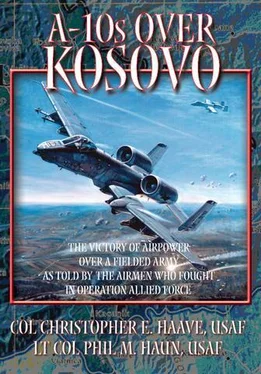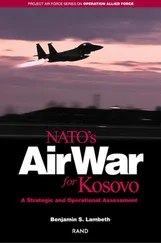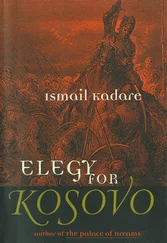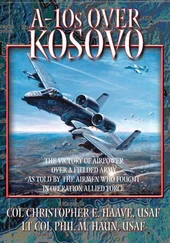After the leader drops on the target, the AFAC adjusts the aim point for each of the successive wingman’s deliveries, based on the results of the previous attacks. The AFAC continues to control the formation’s attack until the strikers run out of weapons, fuel, or time on station—whichever comes first. The AFAC then directs the fighters’ egress direction and altitude to deconflict with inbound fighters.
In addition to the A-10s, two F-16CG squadrons from Aviano Air Base (AB), Italy, and the F-14s from the USS Theodore Roosevelt, in the Adriatic, also flew as AFACs. Naturally, these three very different aircraft performed the AFAC mission quite differently. For target acquisition, F-16s and F-14s used targeting pods that provided a magnified in-the-cockpit picture of the target area while A-10 pilots flew with gyrostabilized 12- or 15-power binoculars, which they often called “binos.” In much of the weather conditions during OAF, binos had much better visual resolution than targeting pods.
A-10s flew more than 1,000 AFAC missions during the 78 days of the OAF air campaign. Thousands of allied aircraft, representing practically every attack aircraft in the NATO inventory, were controlled by A-10s. The specifics of how A-10s performed the OAF AFAC mission are discussed in chapter 2.
CSAR—possibly the most audacious Air Force mission—is made possible by airmen who dare to penetrate bad-guy land and recover recently shot down aviators from under the very nose of the enemy—an enemy who has many reasons for wanting to capture hapless aviators and is all too eager to do so. Those aviators are usually downed in combat and in the course of expending ordnance on the enemy’s troops. The enemy knows that the potential prize can be exploited for intelligence (intel), propaganda, and other political ends—not to mention the pleasure of retribution. For example, during the Gulf War, Saddam Hussein tried to use photos and videos of captured aviators to negatively affect allied public support for the air campaign.
With the increased use of airpower as the first instrument for coercion and peacemaking, the capture of an airman becomes more likely and could provide an enemy with a method of influencing public opinions, especially within allied democracies. An enemy may try to force “confessions” and intel disclosures from captured aviators. Dictators have demonstrated a willingness to subject helpless and, perhaps, wounded air warriors to public ridicule for political advantage without regard to the prisoner-of-war protections afforded by the Geneva convention. With the desire to support and maintain the high morale of allied airmen—and deny the enemy any opportunity for a propaganda advantage—the United States and its NATO allies place CSAR at the top of their “must have” capabilities in their combat planning.
During the preparations for OAF, NATO commanders ensured the availability of adequate CSAR forces. The size and nature of those forces reflected the specific combat circumstances. There are two crucial elements to CSAR success: a recovery vehicle to pick up the survivors and an on-scene commander (OSC) who locates the survivor, protects him or her if necessary, and directs the recovery vehicle to come forward when the area is safe. The recovery vehicle is usually a rescue or special forces helicopter, and the OSC is usually a specially trained A-10 pilot. However, other vehicles and pilots are capable of performing these functions, and there may be many other CSAR actors when the enemy threat is medium to high. These other elements could include the air-refueling tankers; a C-130 ABCCC to provide overall mission coordination and tracking of airborne assets; air-to-air fighters to provide air defense; F-16CJs and other similarly equipped aircraft to provide suppression of enemy air defenses (SEAD) and protection against enemy radar-guided surface-to-air missile (SAM) systems; jamming aircraft such as EA-6Bs; and any type of strike aircraft to provide air-to-ground firepower against enemy ground forces attempting to capture the survivors. These aircraft are often already in the target area performing their primary combat missions when the need arises, and they are then retasked to support the CSAR effort.
Another important element of the CSAR forces is the NATO airborne early warning (NAEW) aircraft, which provides radar coverage and directions to the tankers. The NAEW uses the E-3A aircraft, but its communications equipment is more limited than that of the USAF AWACS, and its aircrews are trained differently than US aircrews. These differences result in a lesser overall capability.
The specially trained and designated CSAR on-scene commanders have carried the Sandy call sign since the Vietnam War. Due to the difficulty and complexity of the mission, only the most experienced and capable A-10 pilots are selected to train as Sandys. They must stay cool and use exceptional judgment to find and talk to the survivor without giving away information to the enemy, who may also be listening or watching. The Sandy must have an extraordinary situational awareness to keep track of the survivor, numerous support aircraft, rescue helicopters, and enemy activity on the ground. An accurate synthesis of this information is absolutely critical to the success of the Sandy’s decision to commit to a helo pickup. Additionally, all CSAR participants must have unshakeable courage because their mission often means going deep into bad-guy land and exposure to significant ground and air threats.
In the Balkan theater the dedicated CSAR assets included MH-53J Pave Low helicopters from the 20th and 21st Special Operations Squadrons at Royal Air Force (RAF) Mildenhall, England. They had deployed regularly to Brindisi AB, Italy, since the mid-1990s. The A-10 Sandy aircraft were usually from the 81st FS/EFS (expeditionary fighter squadrons) from Spangdahlem AB, Germany, flying out of Aviano AB, and Gioia del Colle AB, Italy. During the years of routine deployments (from 1993 to 1999), these units flew CSAR exercises together in Bosnia with support from the NAEW and ABCCC but with little involvement with SEAD, air-to-air, or other attack aircraft. During this time, A-10 Sandys occasionally exercised with Italian and French forces using their Puma helicopters as recovery vehicles.
The first Kosovo crisis in October and November of 1998 led to the Spangdahlem Hogs being sent to Aviano to “stand up” a CSAR alert. At that time, the 81st pilots initiated the development of standardized CSAR procedures for the Balkan area by coordinating with personnel assigned to the CSAR cell at the combined air operations center (CAOC) in Vicenza, Italy, and representatives (rep) from the theater’s NAEW, ABCCC, and Pave Low communities. They renewed that process of coordination and cooperation during their return to Aviano in January, February, and March 1999. With the beginning of hostilities on 24 March, the 81st “stood up” a ground and airborne CSAR alert capability. With only a single two-hour exception on 11 April (during the 81st’s move from Aviano to Gioia del Colle), the 81st—along with the 74th FS and the 131st FS—maintained a continuous ground and/or airborne alert through-out the campaign. During the course of the air campaign, CSAR was 100 percent effective, successfully rescuing one F-117 pilot and one F-16CG pilot. Seven Hog drivers from the 81st and two from the 74th participated in those rescues—making crucial decisions at critical junctures, as well as ensuring that the pilots were picked up and that the helos made it in and out safely. Their personal accounts appear in subsequent chapters.
The Hog can carry a wide variety of weapons—and a bunch of them. On the in-flight mission cards Aviano planners listed the standard munitions load in a column labeled for each aircraft so the AFAC could quickly match the right weapon to the right target. These cards were distributed to all units involved in the Kosovo Engagement Zone (KEZ) and showed most aircraft as having one or two types of weapons available. Under the A-10 label, however, the column just reads, “Lots.”
Читать дальше












